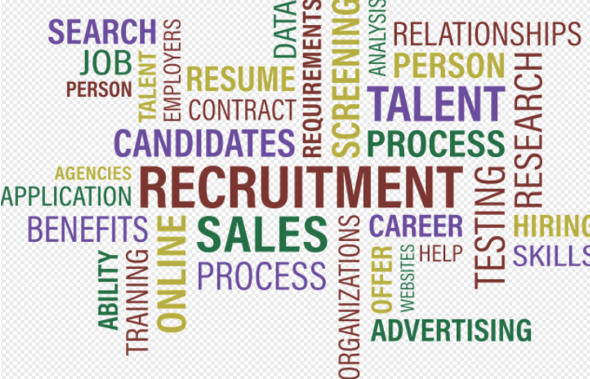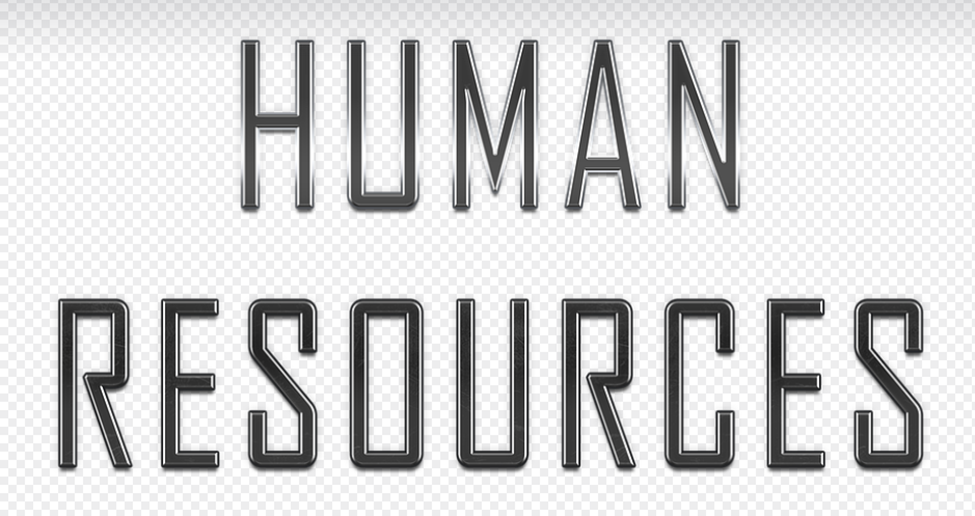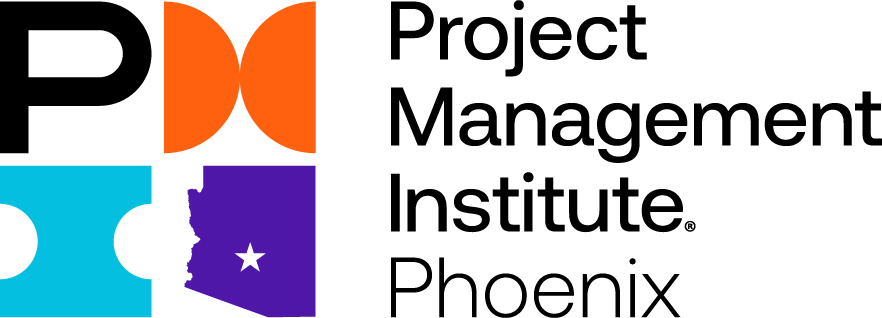
Personal Reflection on Recruitment
My architectural recruitment experiences demonstrate clear parallels with foundational architectural principles. During the recruitment processes I took part in, I demonstrated my abilities in AutoCAD and Revit design software, which showcased the essential role of teamwork in architectural practice. When I participated in interviews, I approached them much like a design project: I showed how my creative vision, combined with problem-solving abilities and meticulous attention to detail, would support team achievements. A successful person shows more than technical know-how because they bring together personal ethics with team goals in a way like how architects create designs that blend vision with practical use.
Architecture recruitment requires candidates who possess diverse perspectives and creative abilities. My interview responses are typically influenced by my experience working with multidisciplinary teams on major community center and urban development projects during my internships. The diverse backgrounds and ideas of candidates strengthened my creative process throughout different projects. When I convey design concepts to clients, I fine-tune my communication abilities and understand how essential clear expression and teamwork really are. The connection between recruitment strategies and architectural practice has reshaped my approach to selecting team members who exhibit fundamental skills and a willingness to cooperate professionally. The alignment ensures that architectural visions are realized through the creation of spaces that foster community connections.
The Need for Strategic Team Building
The fields that require creative collaboration, such as architecture, need strategic team building to function effectively. Every project presents unique challenges and requirements that require assembling a team that holds the necessary expertise and skills to address these needs. The process demands selecting team members with essential technical abilities for the task at hand while assessing their interpersonal skills and capacity to work well with others. Through strategic team building, organizations develop cohesive teams that solve problems creatively and improve communication instead of just completing job openings.
Organizations must implement a forward-thinking approach to hiring talent that aligns workforce capabilities with project needs through continuous evaluation of each project's changing requirements. Leadership should continuously assess team abilities and development requirements to make hiring decisions that meet evolving project demands. Organizations that adopt strategic team-building methods achieve better project results through talent allocation while fostering continuous learning and flexibility, which results in improved outcomes.

Assessing Project Demands Before Hiring
Successful project management depends on dynamic adaptation, which requires both thorough planning and proper resource allocation to function effectively. Project demands must be carefully assessed during the planning phase to enable informed hiring decisions. Project assessment enables teams to determine necessary requirements so they can source the right talent to reach project objectives. This section presents the essential procedures required to perform an accurate assessment of project demands before the recruitment process begins.
1. Define Project Scope
Assessing project demands means starting with a clear definition of the project scope. The initial phase of project assessment requires setting the main objectives and determining the expected results for the project. The project's fundamental planning requires a precise understanding of its intended goals. Effective project progress monitoring throughout its lifecycle depends on pinpointing critical deliverables and significant milestones. A realistic project completion timeline informs the speed at which hiring decisions need to happen.
2. Identify Required Skills and Expertise
The project needs a clear definition of required skills and expertise. The technical competencies evaluation for the project requires coding abilities as well as design expertise and any applicable specialized project knowledge. Successful project completion depends heavily on soft skills like communication abilities, teamwork expertise, and problem-solving competencies, and teams should therefore never neglect these skills. In heavily regulated fields, specialized industry knowledge evaluation demonstrates its importance.
3. Understand Resource Availability
Effective project demand assessment depends on a comprehensive understanding of resource availability. The assessment of the project budget is essential when allocating funds for hiring purposes. By evaluating current team member capabilities, you can pinpoint skill gaps needing attention. The job market examination of qualified candidates offers insight into how accessible essential skills are.
4. Conduct a Risk Assessment
An essential process step involves assessing potential risks associated with the project. During the execution process, it is necessary to assess potential emerging challenges. Primary risks consist of personnel skill shortages and unanticipated project complications. Developing mitigation strategies for project risks becomes necessary as choosing suitable candidates can minimize possible setbacks.
5. Develop Job Descriptions
Project requirements evaluation leads to the necessity of developing precise and comprehensive job descriptions. Job descriptions should detail the required qualifications and skills, along with the responsibilities for each position. Organizations can attract top talent who align with their values by highlighting benefits while providing details about company culture and growth opportunities.
6. Plan for Evaluation and Selection
Organizations need to develop a systematic approach to interviewing and evaluation to guarantee comprehensive candidate assessments. The evaluation procedure necessitates building an interview system that measures candidate technical skills and social competencies. Candidate evaluations that reflect actual project requirements provide deep understanding of applicants' abilities. Evaluating cultural fit during candidate selection ensures that new team members will integrate smoothly with current staff.
7. Continuous Feedback and Adjustment
Organizations should establish a system that allows for continuous feedback and adjustments following the hiring process completion. The performance evaluations of newly hired workers provide essential data on how effectively the hiring process functions. The organization applies insights from the hiring process to enhance strategies for future projects.

Aligning Talent Acquisition with Project Goals
Business organizations must harmonize their talent acquisition processes to match project objectives to achieve operational success and secure project outcomes in today’s competitive environment. The recruitment process aligned with project objectives fulfills immediate staffing needs and progresses both organizational goals and project-specific targets. Effective talent acquisition processes require organizations to employ these strategies and considerations to meet their project objectives successfully.
1. Define Project Goals and Objectives
The recruitment process should follow the establishment of a detailed understanding of project goals and objectives. Project managers need to outline project scope together with expected deliverables and timeframes. The accurate definition of project goals serves as the foundation for identifying the necessary skills and expertise to finish the project. When key stakeholders participate in setting project goals, the necessary talent to achieve project outcomes becomes clearer.
2. Identify Required Skills and Competencies
Once project goals are established, teams must identify which skills and competencies will help them achieve these objectives. Project completion requires technical skills such as software proficiency and methodology knowledge, as well as soft skills like teamwork and problem-solving abilities. Understanding these requirements leads to the development of accurate job descriptions, which help recruiters target candidates who will contribute to project success.
3. Foster Collaboration Between Departments
Successful talent acquisition that achieves project goals requires collaborative efforts between HR professionals and project managers, along with input from other related departments. Through cross-functional collaboration, HR professionals understand specific project needs while project managers acquire knowledge about talent acquisition strategies. When teams meet regularly and communicate clearly, they create a collaborative atmosphere that enhances recruitment procedures.
4. Leverage Data and Analytics
Organizations utilize data analytics strategically to synchronize talent acquisition methods with project objectives. By assessing historical project performance records, organizations discover patterns that relate to necessary skills and project success rates. HR teams can make informed talent acquisition decisions by analyzing recruitment analytics, which offer insights into the effectiveness of hiring strategies according to project requirements.
5. Create an Agile Talent Acquisition Process
Dynamic environments cause frequent changes in project goals due to market fluctuations and organizational shifts combined with client demands. An agile talent acquisition process enables organizations to swiftly adapt to changing requirements. The organization can develop flexible job descriptions to build a talent pipeline for upcoming needs while employing technology to streamline the hiring process. Agile talent acquisition methods enable organizations to quickly staff positions according to changing project needs.
6. Emphasize Employer Branding
Employer branding initiatives allow organizations to recruit top talent that aligns with their project goals. By revealing their mission and values and providing information about upcoming projects, organizations can attract applicants whose goals match their own. When an employer brand clearly communicates its vision, it successfully attracts professionals who aim to achieve specific project outcomes.
7. Focus on Cultural Fit
For project success to occur, both essential skills and experience must be combined with the right cultural fit. Project teams experience improved cohesion and engagement by hiring candidates who embody the company's core values throughout project completion. Employing cultural evaluation criteria during recruitment enables organizations to select employees who meet technical requirements and integrate into team dynamics and organizational values to reach project objectives.
Utilizing Technology in Recruitment
Organizations now depend more on technology to improve their recruitment methods because of today's rapidly advancing technological landscape. Digital tools optimize operational effectiveness while simultaneously making it easier to find suitable candidates. This section examines the revolutionary changes technology brings to recruitment processes.
1. Applicant Tracking Systems (ATS)
The ATS software system automates application handling to simplify the hiring process. Recruiters can use these systems to monitor applicant progress while filtering resumes through keywords and qualifications and maintaining adherence to hiring rules. Centralizing candidate data within ATS systems enables recruiters to dedicate more time to candidate interactions instead of spending time on paperwork.
2. Artificial Intelligence (AI) and Machine Learning
AI-powered tools process massive data volumes to select potential candidates who meet predetermined requirements. The success of candidates for a role can be predicted through machine learning algorithms that analyze previous hiring decisions. Recruiters use chatbots to engage candidates by responding to their questions and updating them on their application progress, which improves the candidate experience.
3. Video Interviews
Recruiters can conduct interviews through video interviewing platforms, which enable remote interviews and help to conserve both time and resources. These systems help organizations attract potential candidates from all geographical locations. Most platforms present automated scheduling and recording features that facilitate reviewing interviews later and sharing them with team members.
4. Social Media Recruiting
LinkedIn, Facebook, and Twitter have become essential components for recruitment strategies. Organizations can search for candidates actively while promoting open positions and demonstrating their company culture through engaging content. The use of social media enables recruiters to reach passive job seekers who don't have active job searches underway but might engage in discussions about new opportunities.
5. Recruitment Marketing
Recruitment marketing tools enable organizations to develop their employer brand and promote it to potential applicants. Employing technology to develop captivating career pages and advertisements with engaging content enables companies to draw in candidates who share their organizational values and goals. By showcasing its company culture and growth opportunities, this strategy piques potential applicants' interest.
6. Data Analytics
Recruitment data analytics delivers valuable information about hiring patterns as well as candidate demographics while also assessing the performance of various recruitment channels. Through tracking time-to-fill, retention rates, and candidate quality, organizations enhance their recruitment strategies by making decisions based on data.
7. Online Assessment Tools
Numerous organizations turn to online assessment tools when they need to assess candidate skills and capabilities. Organizations utilize online assessment tools, which include both skills tests and personality questionnaires, to help hiring managers determine the suitability of candidates for specific roles and organizational culture. This technology enables objective evaluation of critical skills, which helps eliminate biases during the hiring process.
8. Collaboration Tools
Slack and Microsoft Teams are examples of collaboration tools that enhance communication within hiring teams. The use of collaboration tools enables recruiters to provide immediate feedback and discuss candidates together while making decisions more efficiently. The use of these tools promotes teamwork between hiring entities, which results in faster recruitment processes.
Adapting Talent Strategies
Organizations need to adjust their talent strategies to stay successful in today's constantly evolving business landscape. Business organizations need to consistently update their talent acquisition and retention methods as market dynamics evolve and workforce composition changes. These essential considerations and strategies provide guidance for organizations to adapt their talent acquisition methods successfully.
1. Embrace Remote and Flexible Work Options
Traditional employment models have undergone significant changes due to the increased prevalence of remote work. Businesses need to implement flexible work arrangements in order to boost employee satisfaction and draw a wider range of talent. Organizations that establish policies enabling remote work arrangements or hybrid models, along with flexible scheduling options, meet various employee needs and work preferences.
2. Focus on Employee Well-being
Organizations need to incorporate wellness programs into their talent strategies because mental and physical health hold critical importance. Providing mental health support alongside fitness programs and work-life balance initiatives leads to better employee morale and productivity, which results in increased retention rates.
3. Invest in Learning and Development
Ongoing technological progression makes continuous learning essential. Organizations need to fund employee training and development programs that promote skill growth and career advancement. Employees gain essential business skills through this approach while witnessing their organization's dedication to professional development.
4. Foster a Diverse and Inclusive Culture
Diversity and inclusion lead to enhanced creativity and innovation while demonstrating a company’s dedication to its values and social responsibility. Organizations need to develop approaches that bring diverse talent to their workforce while building organizational culture so that every employee feels appreciated and capable.
5. Utilize Data-Driven Decision Making
Data analytics applied to talent management yields important information about how employees perform and stay engaged while revealing patterns in turnover rates. Analyzing data enables companies to spot trends that guide them to make well-informed decisions that strengthen their talent management plans.
6. Redefine Recruitment Processes
The conventional recruitment process may fail to attract top talent in today's competitive job market. Organizations need to explore technological solutions such as AI and recruitment platforms to make hiring processes more efficient and enhance candidate experience. Displaying employer branding and using social media to present company culture facilitates the attraction of prospective candidates.
7. Encourage Employee Feedback and Involvement
Organizations that establish regular feedback mechanisms for employees experience increased engagement while gaining insight into their workforce's requirements and challenges. By integrating employees into decision-making activities and obtaining their input about organizational policies or programs, organizations will experience higher levels of worker engagement and dedication.
Conclusion
Technological progress combined with changing work environments and shifting employer demands are transforming the talent acquisition landscape. Organizations will use artificial intelligence (AI) and machine learning tools to improve candidate sourcing efficiency and minimize hiring biases as these technologies become essential components of recruitment processes. Recruitment strategies will evolve to prioritize candidate experience through transparent and personalized methods. Organizations must implement flexible work arrangements to meet the demand for work-life balance, and they must commit to diversity and inclusion to attract diverse talent that drives innovation and effective problem-solving.
Organizations need to implement a proactive strategy that focuses on ongoing education and flexibility to successfully navigate these changes. Organizations should hire employees based on current abilities while also selecting candidates who show potential for growth and promoting lifelong learning to maintain a competitive edge in an ever-changing market. Organizations that adopt evolving workforce trends will strengthen their ability to attract and keep top talent, which will lead to increased organizational growth and success. Organizations that maintain agility and responsiveness to modern worker needs will successfully drive future talent acquisition strategies.
Bibliography
- AbuRabi'e, D. A. M., Al-Fayuomi, M., & Mustafa, A. B. (2021). Employing Artificial Intelligence And Data Mining for Smart Staff Recruitment.
- Barbosa, C. E., De Lima, Y. O., Costa, L. F. C., Dos Santos, H. S., Lyra, A., Argôlo, M., ... & de Souza, J. M. (2022). Future of work in 2050: thinking beyond the COVID-19 pandemic. European Journal of Futures Research, 10(1), 25.
- Gardner, P. (2019). Recruiting Trends, 2019-2020. Collegiate Employment Research Institute.
- Kirkman, B. L., & Rosen, B. (1999). Beyond self-management: Antecedents and consequences of team empowerment. Academy of Management journal, 42(1), 58-74.
- Lencioni, P. (2002). The five dysfunctions of a team: a leadership fable.Jossey-Bass
- McChrystal, G. S., Collins, T., Silverman, D., & Fussell, C. (2015). Team of teams: New rules of engagement for a complex world. Penguin.
- Project Management Institute. (2021). A guide to the project management body of knowledge (PMBOK guide, Project Management Institute
- Yorks, L., Abel, A. L., & Rotatori, D. (2022). Strategic human resource development in practice. Management for Professionals, 13(41), 547-549.
